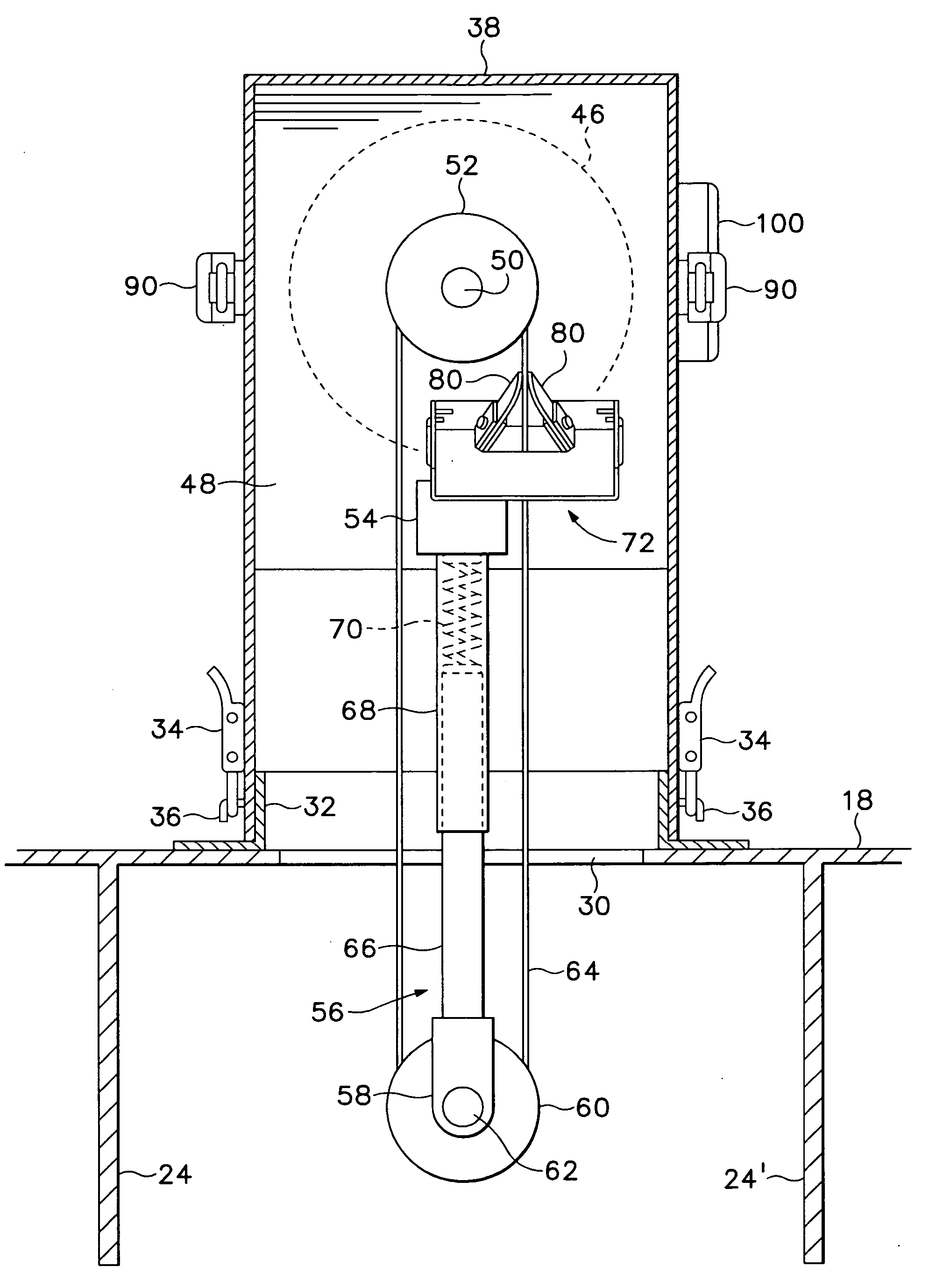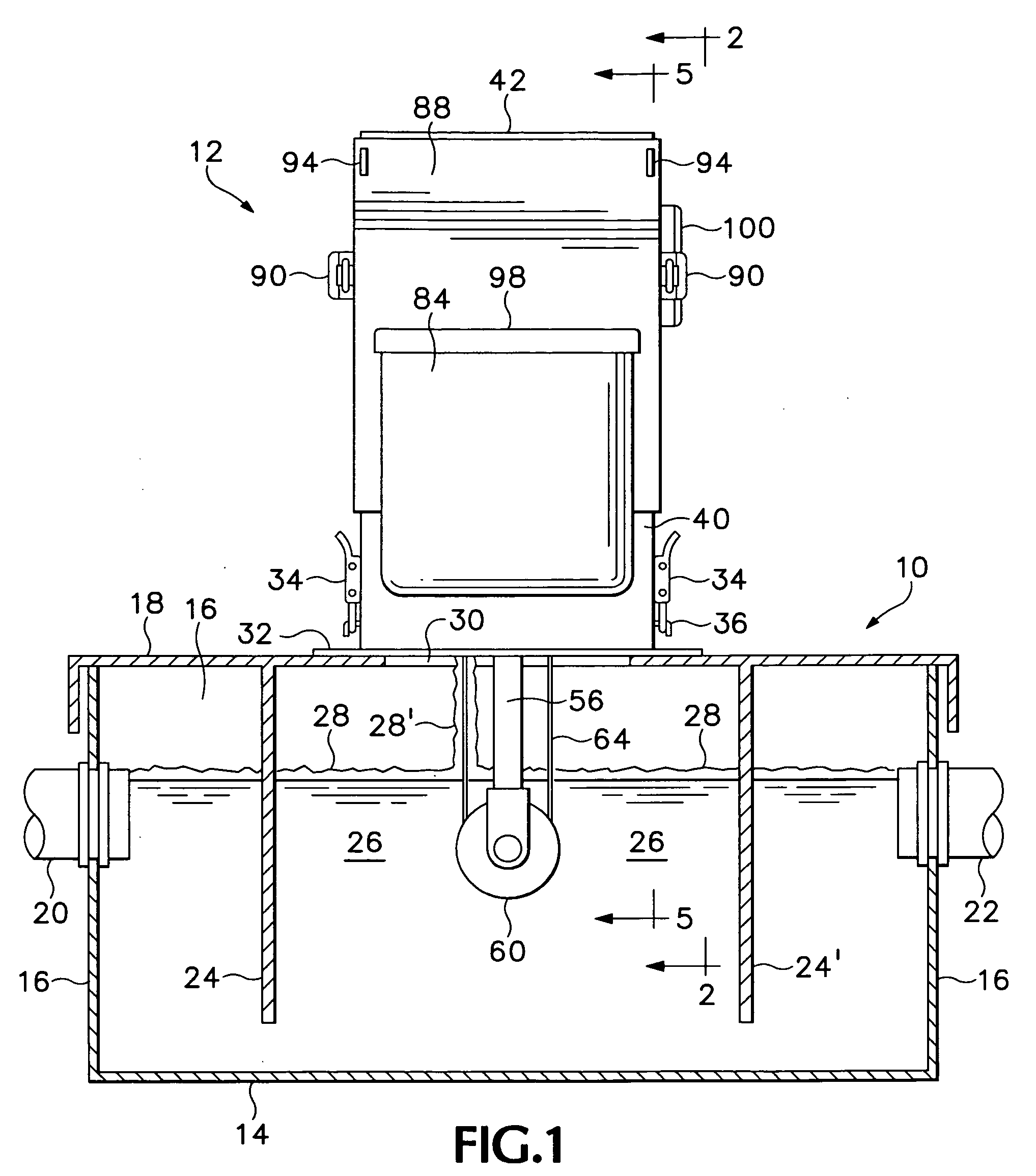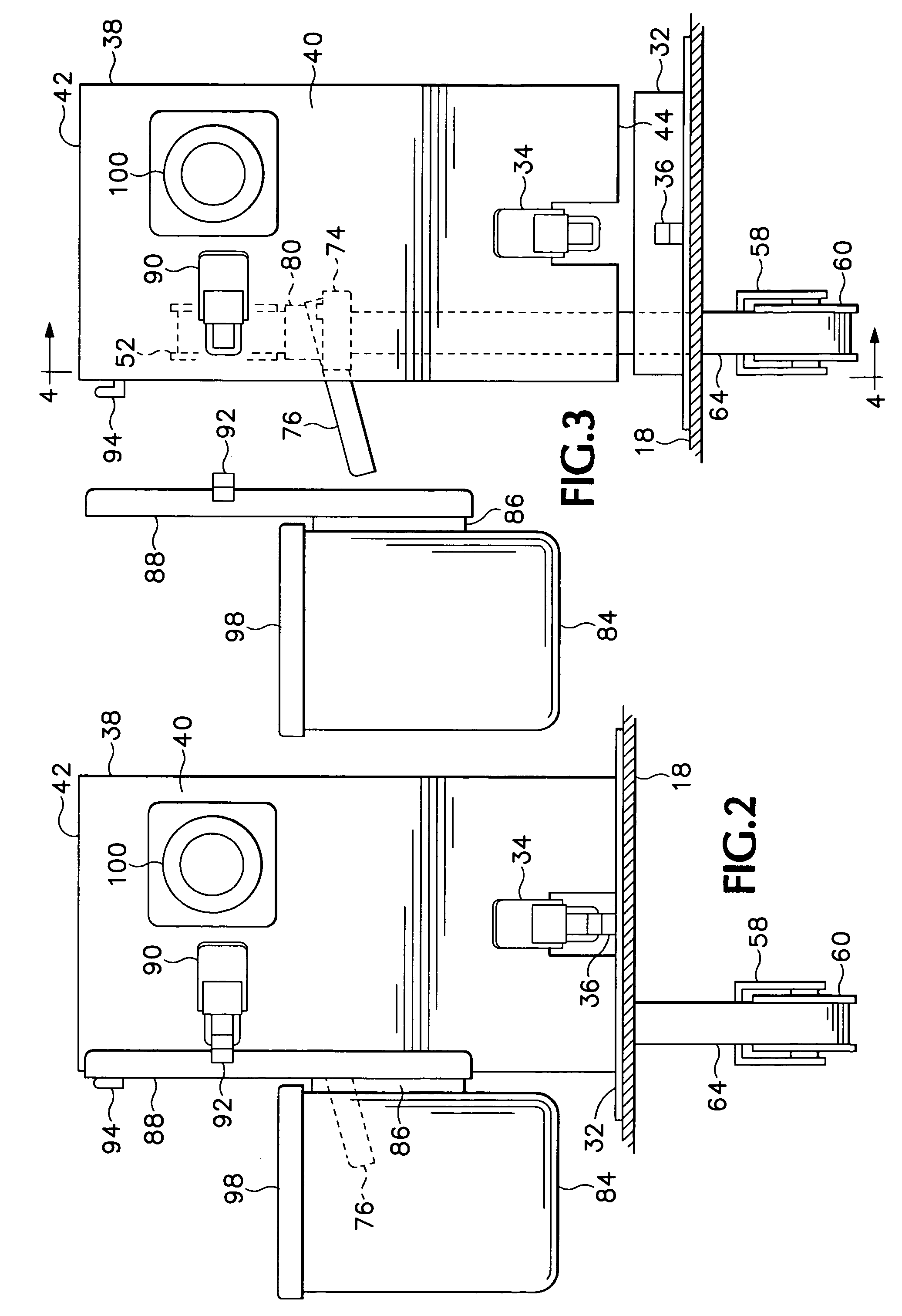Tower-type grease removal apparatus for commercial grease trap assemblies
- Summary
- Abstract
- Description
- Claims
- Application Information
AI Technical Summary
Benefits of technology
Problems solved by technology
Method used
Image
Examples
Embodiment Construction
[0024]FIG. 1 illustrates a basic grease trap assembly generally indicated at 10 mounting a tower-type skimmer and grease removal apparatus 12 embodying features of the present invention. For purposes of illustration herein, the embodiment of the invention illustrated in FIGS. 1-7 is shown in a form arranged for retrofit or subsequent installation onto an already-installed, basic grease trap settling tank assembly 10 in order to upgrade the assembly into automatic skimming capability. It is to be understood however that the grease trap settling tank assembly 10 and tower-type grease skimming and removal apparatus may also be provided together as a complete trap apparatus assembly as well. In either case, the basic grease trap tank assembly typically comprises, as shown, a substantially hollow box member or settling tank formed of a bottom wall 14, upstanding side and opposite end walls 16 and a top wall shown herein as a removable top lid member 18 arranged for releasable securement ...
PUM
| Property | Measurement | Unit |
|---|---|---|
| Gravity | aaaaa | aaaaa |
Abstract
Description
Claims
Application Information
 Login to View More
Login to View More - R&D
- Intellectual Property
- Life Sciences
- Materials
- Tech Scout
- Unparalleled Data Quality
- Higher Quality Content
- 60% Fewer Hallucinations
Browse by: Latest US Patents, China's latest patents, Technical Efficacy Thesaurus, Application Domain, Technology Topic, Popular Technical Reports.
© 2025 PatSnap. All rights reserved.Legal|Privacy policy|Modern Slavery Act Transparency Statement|Sitemap|About US| Contact US: help@patsnap.com



